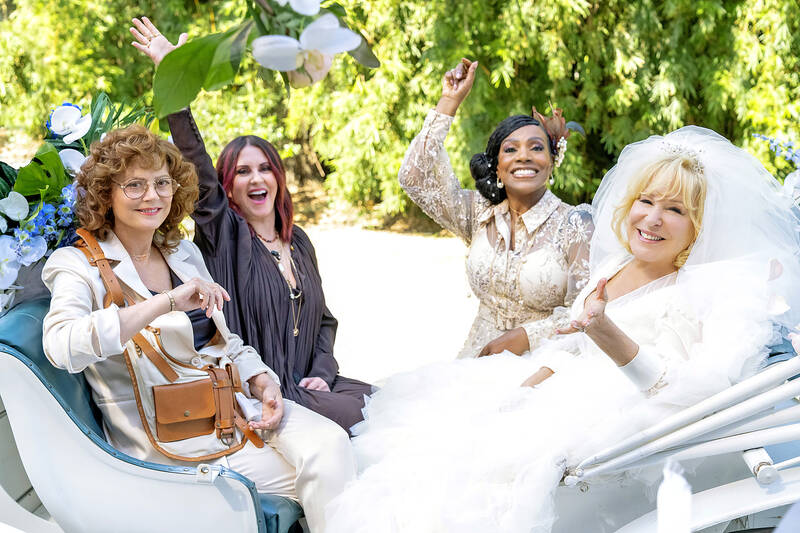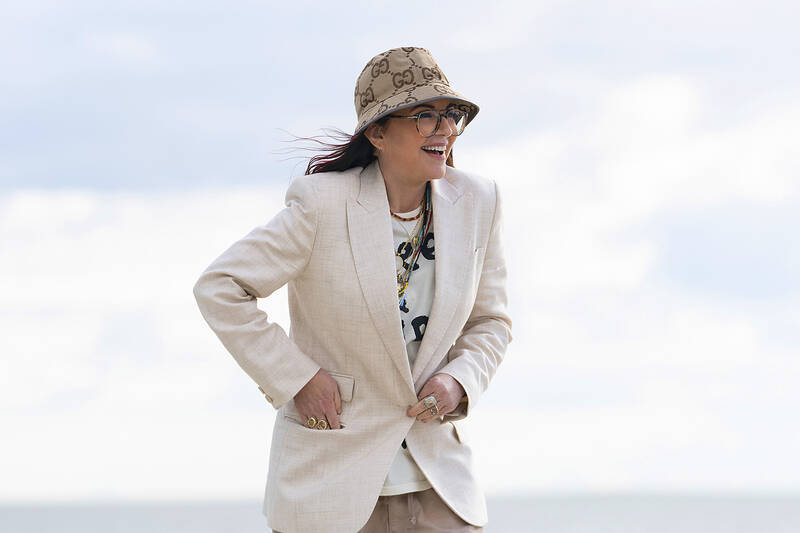Scheduling a movie’s release date is an imperfect science and occasionally an art. Just look at the masterpiece that was Barbenheimer.
While most are open to experimentation in figuring out just what audiences want and when in the wild west of modern theatrical moviegoing, there’s also an unwritten rule that it’s best to leave big superhero movie weekends clear of competition. But whoever thought to open the third-act female friendship comedy The Fabulous Four alongside Deadpool & Wolverine deserves a raise. Because if any audience is being underserved on the opening weekend of an oxygen-sucking, violent and self-referential superhero mashup, it’s women over 60.
So, what better way to escape the merc with a mouth than a trip to Key West with Bette Midler, Susan Sarandon, Sheryl Lee Ralph and Megan Mullally?

Photo: AP
In the vein of 80 for Brady and Book Club, The Fabulous Four may not be a great movie, but it’s also better than it looks. Although it strains for raucousness with edibles and a parasailing expedition gone wrong, there is something admirably sane about it too even if you don’t believe a single moment. It begins, as many of these kinds of films do, with a somewhat tortured explanation of why these women became friends in their youth. Though it nods at a slight age difference between college peers Lou (Sarandon) and Marilyn (Midler) and the two gals they met in New York, Alice (Mullally) and Kitty (Ralph), it’s better to not do the math.
Besides, the more interesting question is not why four single girls in the same building became friends, but rather how they maintained that closeness over the decades. This big life mystery goes largely unexplored, instead focusing on the 40-year estrangement between Lou (now a heart surgeon) and Marilyn. It’s a drama that for utterly incomprehensible reasons Alice (a rock star, seriously) and Kitty (a cannabis entrepreneur grandma) are still entangled in.
Marilyn, recently widowed, is newly engaged and desperately wants Lou to be at her wedding. Alice and Kitty lure Lou to Key West under false pretenses, telling her that she’s won a polydactyl (six-toed) cat and can visit the Hemingway House. They don’t have anything more elaborate in store in this lie. Their plan, it seems, is just to roll up to Marilyn’s house and surprise their unwitting hostage. This seems misguided at best but becomes retroactively cruel when the cause of the fallout is finally revealed. Why meddle now?

Photo: AP
The movie was directed by Jocelyn Moorhouse, the Australian filmmaker behind great and varied female-focused films like How to Make an American Quilt, The Dressmaker and Muriel’s Wedding, and written by Jenna Milly and Ann Marie Allison. And it never quite harmonizes. These characters, fabulous as they may be individually or on paper, aren’t greater together somehow.
As Marilyn and Lou dance around this ancient feud, you start to feel bad for Alice (mostly there to be a quip machine) and Kitty, who would have much more fun ditching them and going off on their own adventure. Midler plays Marilyn so big and broad that she’s more parody than person, although there is a grain of intrigue in the 70-something who gets engaged two months after her beloved husband dies and becomes obsessed with creating TikToks. Sarandon’s Lou is the most thoughtfully developed character, as a rule-abiding woman whose life is in desperate need of a shakeup. She has some cringey moments too (the aforementioned edibles), but also several charming flirtations with the bachelors of Key West (Bruce Greenwood and Timothy V. Murphy).
This is a movie that should have probably leaned far less on wild hijinks with diminishing returns and more into the smaller moments of what it means to be friends for 40 years. But it’s not without its charms, either. I’m not going to argue with them breaking into song out of nowhere. That kind of break from reality, especially with this cast, is always welcome.

Photo: AP

Taiwanese chip-making giant Taiwan Semiconductor Manufacturing Co (TSMC) plans to invest a whopping US$100 billion in the US, after US President Donald Trump threatened to slap tariffs on overseas-made chips. TSMC is the world’s biggest maker of the critical technology that has become the lifeblood of the global economy. This week’s announcement takes the total amount TSMC has pledged to invest in the US to US$165 billion, which the company says is the “largest single foreign direct investment in US history.” It follows Trump’s accusations that Taiwan stole the US chip industry and his threats to impose tariffs of up to 100 percent

On a hillside overlooking Taichung are the remains of a village that never was. Half-formed houses abandoned by investors are slowly succumbing to the elements. Empty, save for the occasional explorer. Taiwan is full of these places. Factories, malls, hospitals, amusement parks, breweries, housing — all facing an unplanned but inevitable obsolescence. Urbex, short for urban exploration, is the practice of exploring and often photographing abandoned and derelict buildings. Many urban explorers choose not to disclose the locations of the sites, as a way of preserving the structures and preventing vandalism or looting. For artist and professor at NTNU and Taipei

The launch of DeepSeek-R1 AI by Hangzhou-based High-Flyer and subsequent impact reveals a lot about the state of the People’s Republic of China (PRC) today, both good and bad. It touches on the state of Chinese technology, innovation, intellectual property theft, sanctions busting smuggling, propaganda, geopolitics and as with everything in China, the power politics of the Chinese Communist Party (CCP). PLEASING XI JINPING DeepSeek’s creation is almost certainly no accident. In 2015 CCP Secretary General Xi Jinping (習近平) launched his Made in China 2025 program intended to move China away from low-end manufacturing into an innovative technological powerhouse, with Artificial Intelligence

From insomniacs to party-goers, doting couples, tired paramedics and Johannesburg’s golden youth, The Pantry, a petrol station doubling as a gourmet deli, has become unmissable on the nightlife scene of South Africa’s biggest city. Open 24 hours a day, the establishment which opened three years ago is a haven for revelers looking for a midnight snack to sober up after the bars and nightclubs close at 2am or 5am. “Believe me, we see it all here,” sighs a cashier. Before the curtains open on Johannesburg’s infamous party scene, the evening gets off to a gentle start. On a Friday at around 6pm,